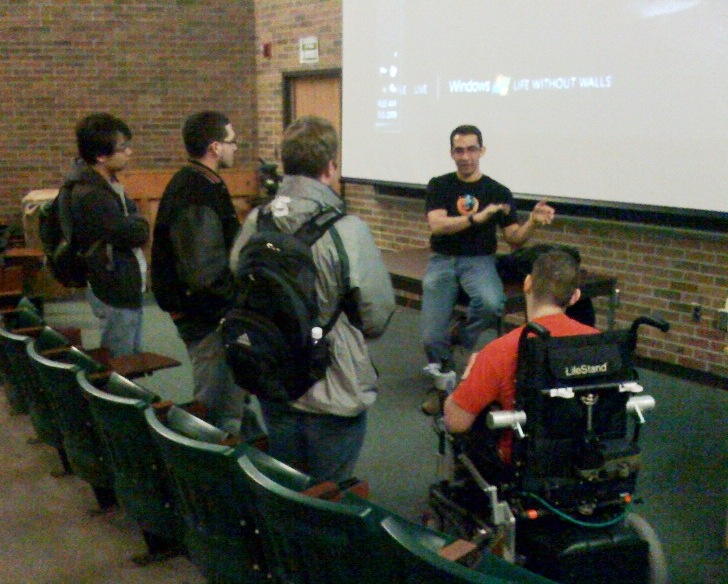Chatting to Students at Michigan State University
by Peter Galli on May 04, 2009 06:08pm
As Microsoft continues to engage in active dialogues with a variety of communities, including academic institutions, Sam Ramji - Microsoft's Senior Director of Platform Strategy - talked to a group of Computer Science students at Michigan State University (MSU) on Friday May 1.
Given that Friday was the last day of school for students, the good attendance at the talk underscores the level of interest in hearing about Microsoft's Open Source strategy.
Ramji was invited to give an address as part of the Department of Computer Science and Engineering's Spring Colloquium Series, where he talked about the evolution of Microsoft's Open Source strategy and what an increasingly diversified technology landscape means for future software engineers.
Ramji told the students and academics that the company firmly believes that Microsoft, Open Source companies and developers, computer science students and others, all play an important role in the overall future of information technology.
He also talked about how Microsoft sees heterogeneity as a reality for the business world, and building technology and partnerships to embrace this reality is a part of a companywide commitment to greater openness and transparency.

Ramji also spotlighted some innovative Open Source projects the company is supporting at universities across the world, including PlugBlog , which is focused on Windows Live Writer and is being developed by students from Croatia.
The primary goal of the project is to help developers and companies that run blogging services integrate with Live Writer by providing them documentation, samples, screencasts and Visual Studio templates. The project is also focusing on developing a set of Live Writer plug-ins as well as documentation to enable developers to build plug-ins more easily.
He also talked about the KDE Education Apps , an Open Source project from undergraduate students from computer science, computer information systems and design courses at Sao Paulo State University in Brazil.
This project takes a small initial group of education applications and ports them to run on the Windows version of KDE.
The third project he talked about was OpenMP to MPI, a development framework for writing distributed memory applications, and works very well for developing High Performance Computing (HPC) applications for Windows HPC Server 2008.
Typically, though, developers have had to choose between writing for a single system SMP environment, which is what OpenMP was designed for, or writing for a distributed computing cluster environment , where MPI is the standard.
This project, which is taking place in India, translates OpenMP code to be deployable using MPI, so that application developers can develop using OpenMP but deploy in a cluster environment if they choose to.
Ramji also stressed how Microsoft works in partnership with the worldwide academic community and is committed to utilizing the power of Microsoft software and technologies to help inspire, encourage innovation and expand opportunities for students and educators in a heterogeneous technology world.
He also mentioned the Open Source Technology Center, Microsoft's open source technology research and development organization, which supports and promotes the creation of regional programs, such as the Interoperability Labs in the Philippines, Germany and Brazil.
But, while students were interested in hearing more about how to establish a Microsoft-sponsored Open Source project at MSU, what was clear from their questions was their concern about finding employment in the current tough economic environment.
During, and after his talk, Ramji talked to worried Computer Science students about what Microsoft looks for when recruiting new staff, how to craft a compelling resume, and what the benefits are for working at the company.